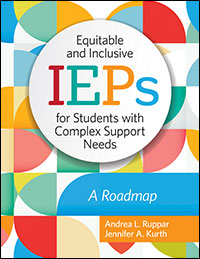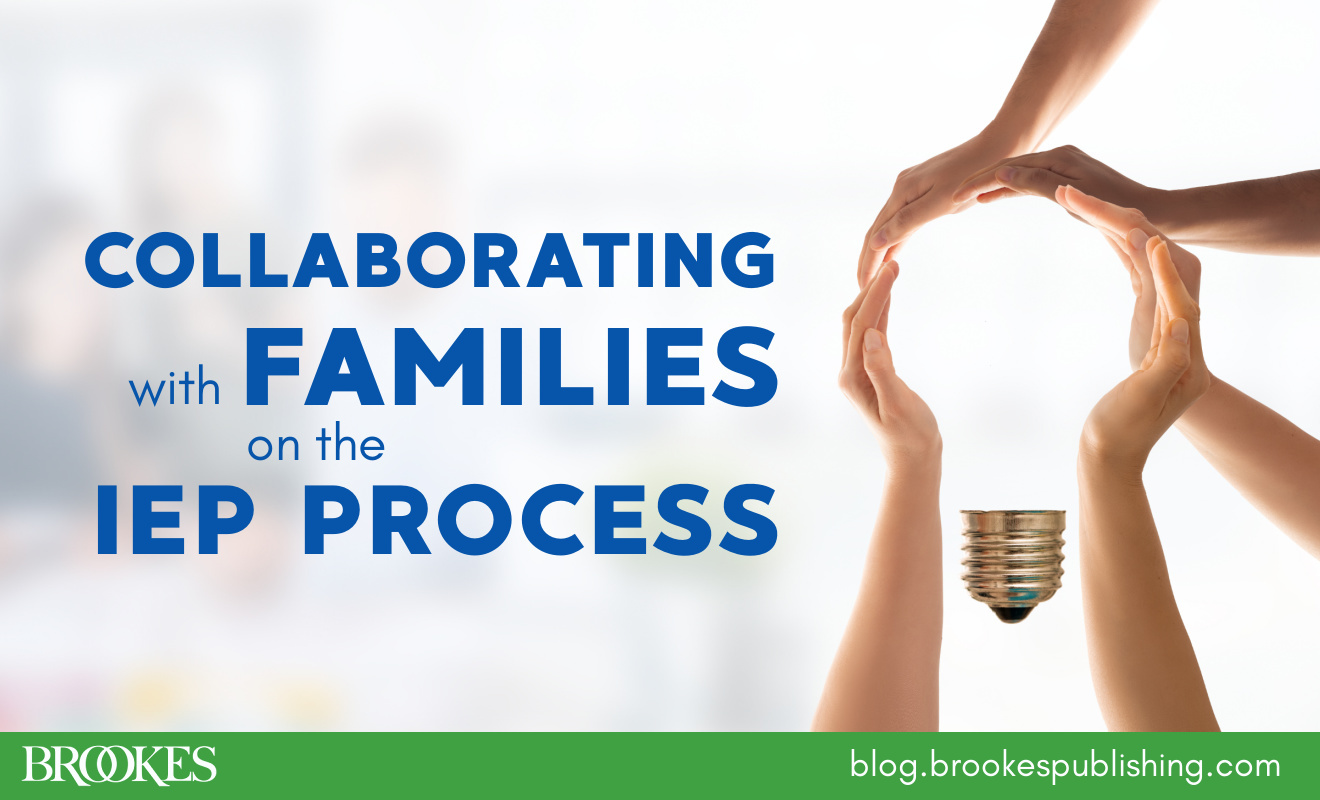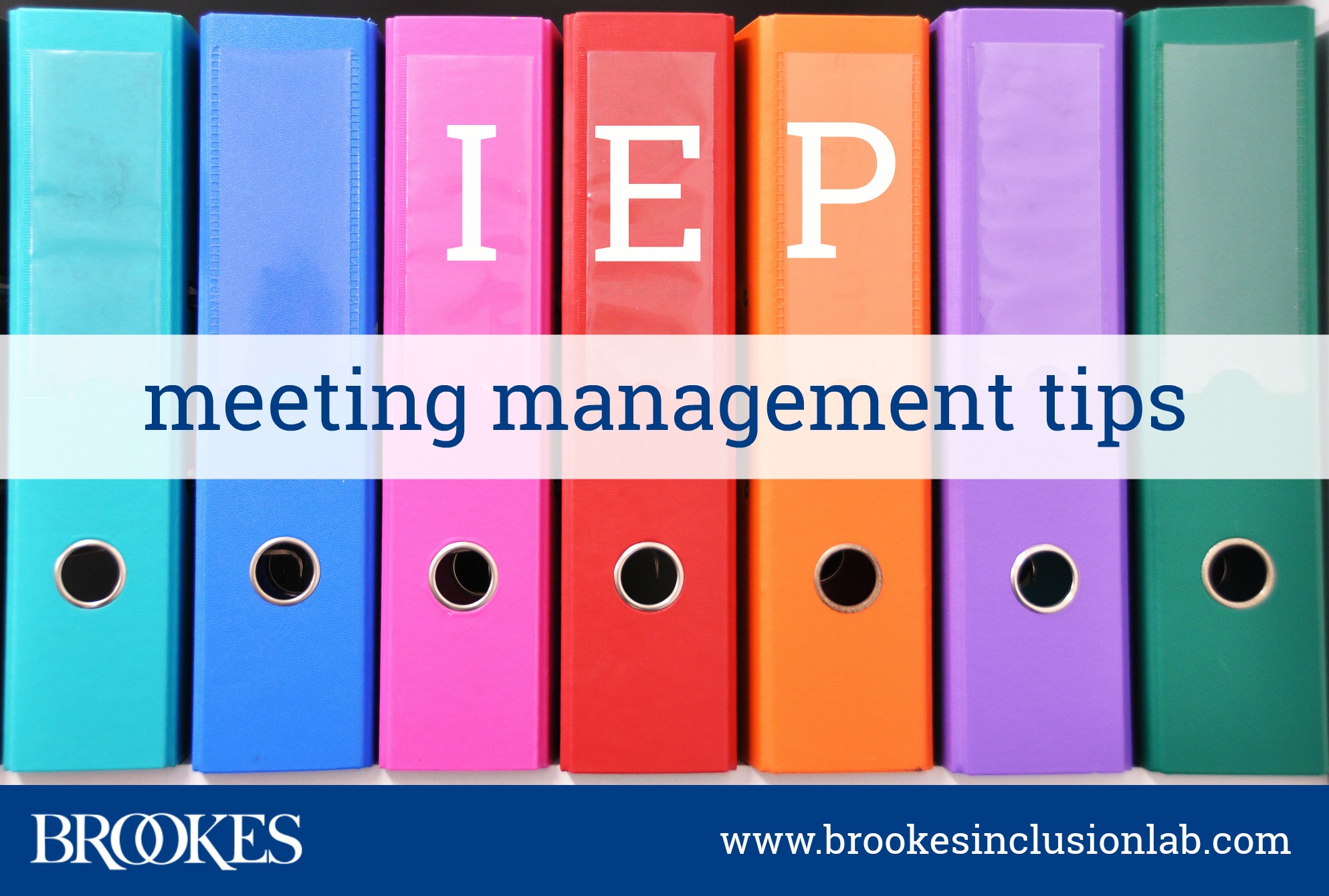11 Things to Do After an IEP Meeting
May 9, 2023
 Many critical decisions are made during an IEP meeting for a student with support needs, so effective and timely followup—with families, students, and other team members—is essential. Today’s post offers a checklist of to-do items to follow after the meeting is over. Excerpted and adapted from Equitable and Inclusive IEPs for Students with Complex Support Needs by Andrea L. Ruppar & Jennifer A. Kurth, these action items will help you follow up successfully, ensure there’s a plan for implementing the IEP, and start the team on a path to success.
Many critical decisions are made during an IEP meeting for a student with support needs, so effective and timely followup—with families, students, and other team members—is essential. Today’s post offers a checklist of to-do items to follow after the meeting is over. Excerpted and adapted from Equitable and Inclusive IEPs for Students with Complex Support Needs by Andrea L. Ruppar & Jennifer A. Kurth, these action items will help you follow up successfully, ensure there’s a plan for implementing the IEP, and start the team on a path to success.
Organize Before You Go Home
- Make sure you have all your meeting notes in one place before you head home after a meeting. Take a moment to organize them and highlight anything that needs immediate attention. Put those tasks on your to-do list for first thing on the following day.
- Develop a task list. Use your notes to organize a task list and show who would be responsible for completing each task. Putting these responsibilities in a task list as a shared document, such as Google Docs, will facilitate the timely completion of tasks. This shared document can be updated throughout the year to designate changes in responsibilities, tasks that need to be completed before the IEP is implemented, and to designate tasks and responsibilities once the components of the IEP are put in place.
Follow Up with Families and Students
- Make a phone call or email family members. Make sure they shared everything they wanted to during the meeting. Let them know you are available to answer any questions and can make sure all their concerns are addressed before the IEP is finalized. Provide the family with resources to clarify any questions they may have. Although using acronyms (e.g., SAS, OT, PT, SLP, ESY) is not recommended, a quick guide with acronyms that are sometimes used would be helpful for families when digesting all of the information from the meeting.
- Include students. Be sure to include the student in the conversation with their family members. Make sure that the student was able to voice all their concerns, and provide time to answer their questions.
- Provide students and families with a summary of IEP decisions. This summary could include things like a list of services, goals, and a sample schedule so they can understand how much time will be spent in the general education classroom and when the student will be receiving all the recommended services.
- Remind families and students of the next steps toward IEP implementation. Let them know that the team will be creating a schedule and determining who will be responsible for providing supplementary aids and services and monitoring goals throughout the student’s educational environment. Continue keeping families informed between the meeting and the IEP implementation and make sure you are listening to their concerns and answering any questions.
- Develop a communication flowchart to share with families. This way, they know which member of the IEP team they should contact about different aspects of the IEP. This will help both families and providers to streamline communication most effectively. The flowchart creates set boundaries about communication and responsibilities between school-based IEP team members and families.
Learn more in this post on 4 Barriers (and Solutions!) to Family Participation in IEPs
Follow Up with Other Team Members
- Follow up with all team members about the meeting. Make sure there are no changes that need to be made to the present levels, goals, or supplementary aids and services. Send a copy of the completed IEP to the families once it is finalized.
- Share the task list with all team members and allow them to mark the document with highlights or check marks once the task has been completed.
- Distribute the summary. Provide all school-based members of the IEP team a copy of the summary of the IEP that you also provided to the family. This will help prepare the school-based team when it is time to create a schedule and manage the implementation of the entire IEP.
- Designate roles carefully. Sometimes some IEP decisions may require an outside consultant, or perhaps a request for services needs to be completed. For example, if the student requires a communication device, you may need to submit an AT request through the district. With each of these requests, make sure you are designating roles appropriately. For example, the speech-language pathologist may be the most appropriate person to facilitate the process of obtaining a communication device.
Keep these steps in mind after the IEP meeting to ensure successful implementation of the plan—and support positive outcomes for your students and their families. For a complete guide to inclusive IEPs for students with complex support needs, check out the book that inspired this post!




Write a Comment
Your email address will not be published. Required fields are marked *
Post a Comment